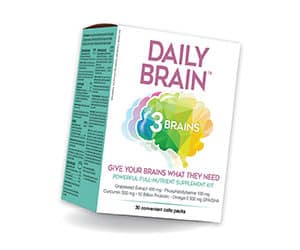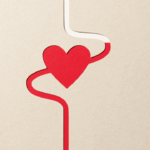
Your alarm goes off at 6 am, you hit snooze a few times and then drag yourself out of bed to get ready for work. You splash some water on your face, put your hair in a bun, grab a cup of coffee, and sit down in front of the computer ready for your Zoom meetings for the day. But wait.
"I’M HUNGRY"
"I DON’T UNDERSTAND MY HOMEWORK"
"CAN I HAVE THE IPAD?" or
"CAN I WATCH TV?"
Do These Sound familiar to any of you?
This is the new reality for many people who have transitioned to working from home in light of the COVID-19 pandemic.
With many schools and workplaces closed, moms and dads have had to juggle the role of teacher, parent, chef, entertainer, and…well… everything.
A survey conducted in mid-April from leanin.org, a women-at-work advocacy group created by Facebook COO Sheryl Sandberg, suggests that women have been hit the hardest by the increased pressures of work and home during this time.
The survey found that women report spending an average of 71.2 hours a week on household chores and caregiving since the onset of the pandemic, while men report 51.5 hours.
“Coronavirus has exacerbated the stresses and inequities working women were already experiencing,” Sandberg said, “Working mothers often work a ‘double shift’ in normal times, logging more time doing housework and childcare than working fathers. But now, with schools closed and a lack of childcare, the pressures have compounded.”
That 20-hour difference is “half a full-time job,” she emphasized. “That’s unsustainable. It’s not healthy for them. It’s not healthy for their relationships. It’s not healthy for their children.”
As mentioned in the survey, single mothers reported spending more hours weekly on housework, childcare, and eldercare than partnered women. Black and Latina mothers spent more time doing all three than their white counterparts.
These past few months have inevitably caused an enormous amount of stress, whether it comes from a financial, emotional, or physical standpoint. Most of my female patients have reported not having the time to exercise, eat healthily, or have their own “self-care” time.
“Self-care,” they say, “What is that?”
No self-care puts additional stress on our hormones and, like a domino effect – can cause other vital pathways and functioning systems to go awry.
THE KEY IS SUPPORTING ESSENTIAL HORMONES AND FOUNDATIONAL SYSTEMS TO KEEP YOU HEALTHY THROUGH THESE DIFFICULT TIMES.
Let’s take a look at the main hormone themes that could be impacting you:
1. Support your stress glands – the adrenal glands
Stress can cause hormonal imbalance by increasing the production of the stress hormones, including adrenaline and cortisol from the adrenal glands. The adrenal glands are two small glands that sit on top of the kidneys and are the body’s primary stress responders. They help support the body’s ability to cope with or adapt to stress. When the adrenal glands continuously have to adapt to stress, progesterone is converted to the adrenal hormone cortisol rather than turning to estrogen and testosterone in the steroid pathway.
This causes progesterone, estrogen, testosterone, and even thyroid hormone production to be “sacrificed” instead of making more of the stress hormones.
Adaptogens are herbs that can support the adrenal glands in adapting to stress. Herbs, including Siberian ginseng, rhodiola, ashwagandha, suma, and schizandra help increase the body’s capacity to cope with stress, thus maintaining hormone balance.
2. Estrogen dominance – support the liver
Some of the most prominent causes of PMS- related symptoms, (e.g., endometriosis, uterine fibroids, fibrocystic breast disease), and possibly some female cancers are due to excessive estrogen, also known as estrogen dominance. One of the primary sources of too much estrogen in the body comes from xenoestrogens, which are environmental toxins found in plastics, pesticides, beauty products, cleaning products, detergents, birth control pills, and hormones replacement therapy. Xenoestrogens are structurally similar to estrogen and can mimic estrogen in the body and cause an excess estrogen state. These “foreign” hormones can also create damaging by-products and metabolites, putting a lot of stress on the liver and disrupting normal hormone pathways. Decreasing estrogen through the support of the liver detoxification pathways and supplementing with vitamin B6 and progesterone-enhancing herbs such as vitex can help the situation.
Calcium-D-glucarate, indole-3-carbinol, diindolylmethane (DIM), and sulforaphane are essential substances to support healthy hormone metabolism by promoting liver detoxification and excretion of harmful xenoestrogens. Milk thistle is a well-researched botanical extract that contains potent antioxidants that protect liver cells from free radical damage and support detoxification pathways. Turmeric, lycopene, rosemary, and green tea are potent antioxidants thus protecting the body from environmental insult.
3. Not to be forgotten – the thyroid
In general, hypothyroidism or low thyroid hormone is a common condition in North America and affects between 20 and 25% of the female population and about 10% of males. Also, approximately 30% of people over the age of 35 may have subclinical or mild hypothyroidism where the thyroid-stimulating hormone (TSH) from the pituitary gland is within the normal range. Still, they have many symptoms of low thyroid. If you are tired, gaining weight, have cold hands and feet, hair loss, dry hair or skin, cracking in the heels and insomnia, consider low thyroid.
Clinically low thyroid, as confirmed by your doctor, requires prescription medication. However, if your tests come back normal and you are still experiencing symptoms you can support your thyroid with a natural formulation containing L-tyrosine, ashwagandha, guggul, pantothenic acid, copper, manganese, and iodine.
4. A Transitional time – menopause
When a woman’s childbearing years come to an end, she will begin to experience the first signs of menopause. During this time, the body is adjusting to fluctuating hormone levels. Various signs of menopause include irregular or absent menstrual periods, hot flashes/flushes or night sweats (80% of women experience this), mood swings, insomnia, depression, urinary problems, and loss of libido. A woman’s risks of heart disease and osteoporosis also increase during menopause.
Not to be forgotten during menopause are the adrenal glands. Once a woman reaches menopause, the adrenal glands become the primary source for sex hormone production. Therefore, the stress of everyday life, as well as the transition into menopause, no doubt creates much strain on the adrenal glands. Many women have “stressed” or “fatigued” adrenal glands long before they reach menopause, which make their menopausal symptoms harder to cope with.
Black cohosh, chasteberry, gamma-oryzanol, hesperidin, and dong quai will help balance fluctuating hormone levels and ease the transition through menopause.
No matter what’s going on, it’s vital to take time for yourself. As women, we feel the pressure to “do it all,” but we forget that we have an obligation to ourselves too!
Consider this your permission slip to relax a bit before logging on to your next Zoom meeting, cooking dinner, or organizing the next lesson plan.














